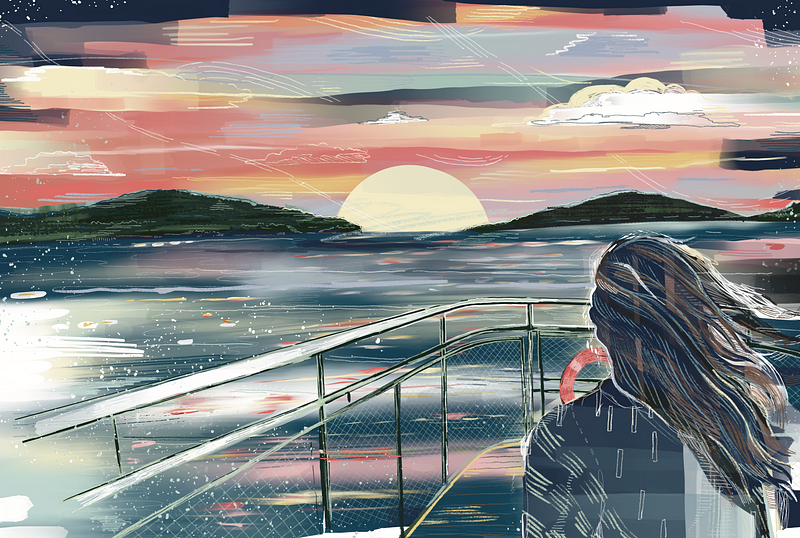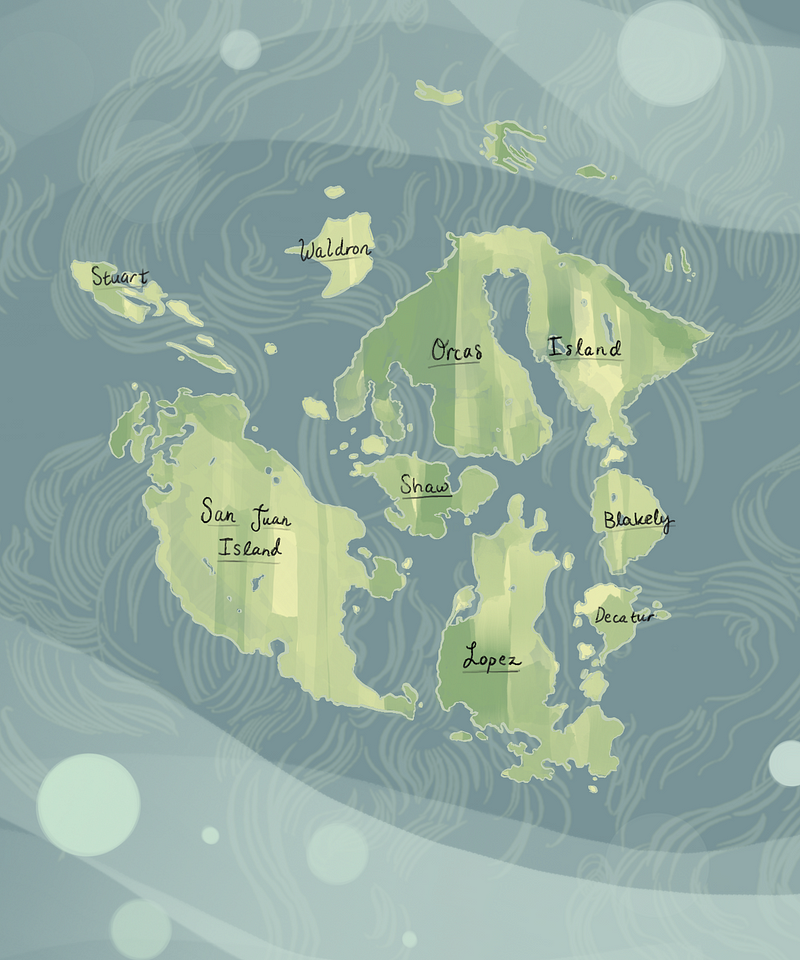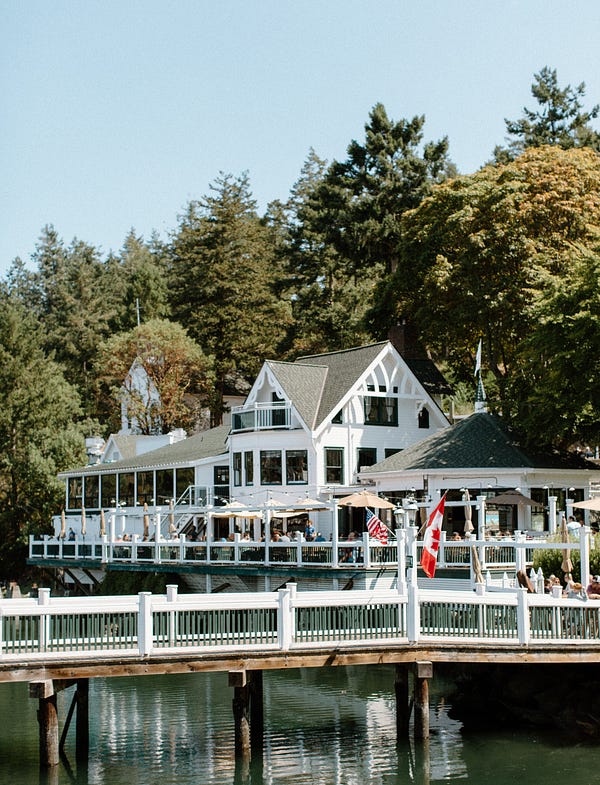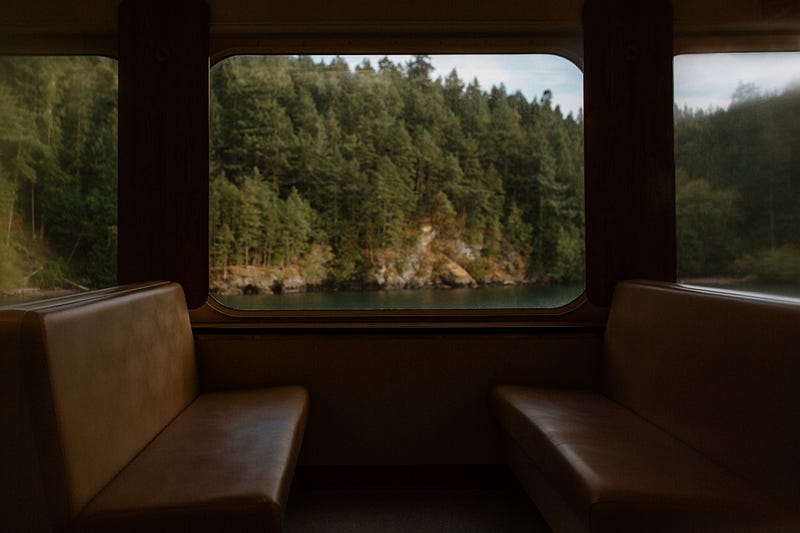More Than Meets the Island

How living on an island for three months helped me escape an abusive relationship.
Story by Anonymous
Editor’s note: The author has chosen to remain anonymous out of privacy concerns.
M y $5 drugstore concealer wasn’t going to do the job. I quickly realized this as I glanced at myself in the mirror attached to the inside of my dorm wardrobe. The quality of the mirror wasn’t the best. It was always a little foggy, but this time I didn’t mind.
I no longer appreciated the low-quality mirror as it settled in that this was a reality I would have to face. I would have to explain this to people. I would have to explain the bruise on my forehead. Racking my brain, I searched for false explanations.
My thoughts were disrupted as I heard a rattle of keys in the doorknob, making me jump.
As my roommate Jess walked through the door, I quickly realized I’d have to do some talking.
“Hey,” I greeted her, visibly shaken. I vividly remember the look in her eyes. She assessed my appearance in a concerned way, furrowing her brows.
Before she could come to any conclusions, I blurted out, “I was walking on campus and tripped on a brick. I hit my head.” I tried to sell the story with an awkward laugh.
There are loose bricks everywhere on campus. People trip all the time, right? This has to be believable, I told myself.
I got so used to saying this excuse that I started to think it actually happened.
However, I was reminded of the truth every single time I’d spot a loose brick on campus. For a split second I would think of the moment I tripped, fell and hit my forehead before I realized it wasn’t true. I wished it was.
What actually happened moments earlier: my boyfriend on top of me, screaming, pressing my face into the wooden floor so hard it left a bruise on my forehead.
He would scream for so long I couldn’t recognize what he was saying anymore. My head would start to feel like it was underwater.
I don’t remember how I ended up on the floor, but I remember trying to crawl away, sobbing, as he kept me pinned beneath him.
Eventually, I made it outside. The piercing cold air bit into my skin, but I couldn’t feel it. I was still numb from the adrenaline.
I reached my car, fumbling as I touched the icy door handle. Immediately after I got inside and saw my windshield, my heart sank. It was frosted over to the point where you couldn’t see anything through it. I frantically tried to start my car while it sputtered. As the engine finally roared to life, I left the driveway, hoping to leave our relationship for good.
About 30 minutes later, I was in my dorm with my concealer. The next day, my winter quarter classes started. A week later, I was talking to him once again.
Why would I continue to be with someone so violent? Unfortunately, it’s a common circumstance.
According to the National Coalition Against Domestic Violence, an average of nearly 20 people per minute experience physical abuse by an intimate partner in the U.S.
Additionally, research conducted by the National Domestic Violence Hotline lists fear, normalized abuse, shame, intimidation, low self-esteem and lack of resources as the top reasons why women don’t leave abusive relationships.

For me, I wasn’t able to leave this relationship until I physically placed myself on an island away from him.
After my freshman year of college, I boarded a ferry en route to Roche Harbor on San Juan Island to work for the summer.
I brought one suitcase but a lot of baggage.
As soon as I walked inside my new home, I was immediately hit with a sense that the walls were talking. An “I Want You” Uncle Sam poster was taped to the wall above a sink filled to the brim with dirty dishes. The house was messy, yet welcoming. Unbeknownst to me, this mirrored how my summer would unfold.
I entered my room, noting the space was about half the size of my dorm room. It had one white built-in bunk bed pushed against the wall and a blue seashell curtain draped over the edges. The sun’s bright rays streamed through the window and looked out into lush foliage, complementing the white trim.
That evening, I wandered to the nearby store and purchased a box of mango popsicles and a package of Hot Pockets. As I ambled back from the store along the seaside gravel path in the warm sunlight, I ate my popsicle. I realized this was the first time I had felt at ease in what felt like an eternity.
Not too long after I got home that day, I was invited to my first, but certainly not last, sunset cruise. Fellow employees took their boats out to Haro Strait, a stone’s throw away from Roche Harbor. We would raft-tie our boats next to each other, hang out and watch the sun slip beneath the waves.
Every night after getting off work was a different adventure. Occasionally we went to a yacht party, other times we had a beach bonfire. Some nights we would even travel to nearby islands. I remember heading home from Waldron Island with a few of my coworkers when we spotted a pod of orcas breaching during sunset.
While I had no idea what was in store for each night, one thing was always certain — I knew I wasn’t alone.
With so many people from different backgrounds around the world living in close quarters, we were forced to accept each other. There was something beautiful about developing deep bonds with such a diverse group of individuals.
Although this experience saved me, most people in abusive relationships may not have access to an island to escape to.


It may be hard for many people in an abusive relationship to recognize abusive behavior.
According to the National Domestic Violence Hotline, “At the start of a new relationship, it’s not always easy to tell if it will later become abusive. In fact, many abusive people appear like ideal partners in the early stages of a relationship.”
Once you can recognize abuse, you may hope for your partner to change. According to HelpGuide, some of the signs your abuser will not change are minimizing the abuse or denying how serious it really was. They continue to blame others for their behavior and they claim you’re the one who is abusive.
While you are in an abusive relationship, HelpGuide recommends following some safety precautions. Some of these include knowing the abuser’s red flags, identifying safe points in the house and keeping a burner phone.
Although it may be hard for many people to physically distance themselves from their abuser, I realized the new friendships I made were what helped me the most.
In his article “Why Friendships Are Vital to Your Wellbeing,” Dr. Jonathan Leach said, “Knowing that support is available from a friend increases feelings of security and helps to protect against stress.”

Eventually, my summer came to an end. Leaving the island felt like leaving another planet.
Standing on the back of the ferry and encompassed by the Salish Sea, the rugged shores lined what now looked like flecks of green that drifted away in the horizon. I knew I was leaving my old self I came there with.
With years of healing to come, I no longer had to worry about the quality of my concealer.
